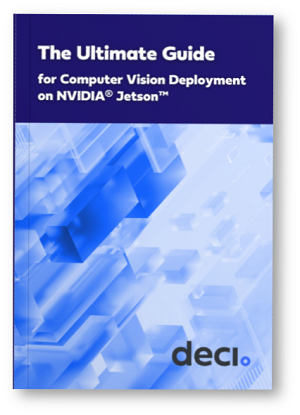The Pretrained Foundation Models (PFMs) are regarded as the foundation for various downstream tasks with different data modalities. A pretrained foundation model, such as BERT, GPT-3, MAE, DALLE-E, and ChatGPT, is trained on large-scale data which provides a reasonable parameter initialization for a wide range of downstream applications.
Research Highlights: A Comprehensive Survey on Pretrained Foundation Models: A History from BERT to ChatGPT
Video Highlights: Attention Is All You Need – Paper Explained
In this video presentation, Mohammad Namvarpour presents a comprehensive study on Ashish Vaswani and his coauthors’ renowned paper, “Attention Is All You Need.” This paper is a major turning point in deep learning research. The transformer architecture, which was introduced in this paper, is now used in a variety of state-of-the-art models in natural language processing and beyond. Transformers are the basis of the large language models (LLMs) we’re seeing today.
Deci delivers breakthrough inference performance on Intel’s 4th Gen Sapphire Rapids CPU
Deci, the deep learning company building the next generation of AI, announced a breakthrough performance on Intel’s newly released 4th Gen Intel® Xeon® Scalable processors, code-named Sapphire Rapids. By optimizing the AI models which run on Intel’s new hardware, Deci enables AI developers to achieve GPU-like inference performance on CPUs in production for both Computer Vision and Natural Language Processing (NLP) tasks.
Got It AI Develops AI to Identify and Address ChatGPT Hallucinations for Enterprise Applications
Got It AI, the Autonomous Conversational AI company, announced an innovative new “Truth Checker” AI that can identify when ChatGPT is hallucinating (generating fabricated answers) when answering user questions over a large set of articles or knowledge base. This innovation makes it possible to deploy ChatGPT-like experiences without the risk of providing incorrect responses to users or employees.
AI-generated Texts Could Increase People’s Exposure to Threats
Research finds that large language models are susceptible to abuse through creative prompt engineering, forcing people to become even more skeptical about what they read.
New Research Shows that 77% of Businesses Using Natural Language Processing Expect to Increase Investment
More than three-quarters of businesses with active natural language processing (NLP) projects plan to increase spending on in the next 12 to 18 months, according to new data from expert.ai, a leading company in artificial intelligence (AI) for language understanding. The finding is one of many data points culled from a recent survey and detailed in expert.ai’s new report, The 2023 Expert NLP Survey Report: Trends driving NLP Investment and Innovation.
Big Data Industry Predictions for 2023
Welcome to insideBIGDATA’s annual technology predictions round-up! The big data industry has significant inertia moving into 2023. In order to give our valued readers a pulse on important new trends leading into next year, we here at insideBIGDATA heard from all our friends across the vendor ecosystem to get their insights, reflections and predictions for what may be coming. We were very encouraged to hear such exciting perspectives.
Research Highlights: R&R: Metric-guided Adversarial Sentence Generation
Large language models are a hot topic in AI research right now. But there’s a hotter, more significant problem looming: we might run out of data to train them on … as early as 2026. Kalyan Veeramachaneni and the team at MIT Data-to-AI Lab may have found the solution: in their new paper on Rewrite and Rollback (“R&R: Metric-Guided Adversarial Sentence Generation”), an R&R framework can tweak and turn low-quality (from sources like Twitter and 4Chan) into high-quality data (texts from sources like Wikipedia and industry websites) by rewriting meaningful sentences and thereby adding to the amount of the right type of data to test and train language models on.
Chung-Ang University Researchers Develop Algorithm for Optimal Decision Making under Heavy-tailed Noisy Rewards
Researchers from South Korean Chung-Ang University propose methods that theoretically guarantee minimal loss for worst case scenarios with minimal prior information for heavy-tailed reward distributions.
The Ultimate Guide for Computer Vision Deployment on NVIDIA Jetson
Our friends from the Deci Team offer “The Ultimate Guide for Computer Vision Deployment on NVIDIA Jetson” which is perfect if you’re running or planning to run computer vision applications on NVIDIA Jetson devices. Written by Deci’s deep learning engineers for deep learning engineers, here’s what you’ll learn: (i) Best practices and technical know-how on model selection, training, optimization and deployment on Jetson, (ii) Tips for selecting the right NVIDIA Jetson for your use case, (iii) Code, tools, further resources for every recommendation provided











